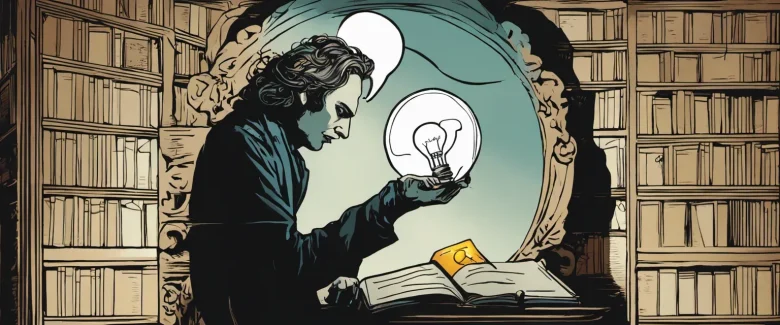The Hollow Crown, penned by Daniel Gwynne Jones, is a thrilling historical fiction novel set in the turbulent times of 15th-century England. This gripping tale delves into the life of a young peasant named William, who unexpectedly finds himself at the heart of a dangerous quest. As the kingdoms of England and France clash during the Wars of the Roses, William’s fate becomes entwined with the relentless pursuit of power and the devastating impact it has on those caught in its grip. Daniel Gwynne Jones, a renowned British author and historian, masterfully weaves together fact and fiction, bringing to life a riveting narrative that captures the essence of this volatile period in history.
Chapter 1: The King’s Ascension
Chapter 1: The King’s Ascension of the book “The Hollow Crown” by Daniel Gwynne Jones introduces us to the realm of Trilanor and the impending succession of the kingdom’s throne. The chapter primarily focuses on King Gilbert, a wise and respected ruler facing his last days, and his young and inexperienced son, Prince Lionel, who is preparing to ascend to the throne after his father’s passing.
The chapter begins with the king reflecting upon his legacy and the need for a strong and capable leader to succeed him. He recalls the challenges he faced during his rule, including wars, political disputes, and economic crises. Throughout his reign, King Gilbert has maintained the balance and harmony of the kingdom, earning the love and respect of his subjects.
Meanwhile, Prince Lionel grapples with the weight of his impending responsibility. He is aware of his shortcomings and lack of experience, fearing that he may not live up to his father’s legacy. However, with the guidance of his trusted advisor, Lord Reginald, and the support of his loyal friends, Lionel seeks to prove himself worthy of the crown.
As the chapter progresses, the king’s health begins to decline rapidly, signaling the approaching end of his reign. Prince Lionel, accompanied by his childhood friend, Sir Robert, embarks on a journey to the ancient temple of elders, seeking wisdom and guidance to prepare him for his ascension. The temple’s mystical elders, with their otherworldly voices, offer Lionel advice that highlights the importance of leadership, humility, and compassion.
Chapter 1 sets the stage for the rest of the story, emphasizing the challenges and doubts Prince Lionel faces as he prepares to become the next ruler. It also introduces the ancient wisdom and mysticism that will play a significant role in his journey of self-discovery and the future of Trilanor.
Chapter 2: A Kingdom in Turmoil
In Chapter 2: A Kingdom in Turmoil of the book, “The Hollow Crown” by Daniel Gwynne Jones, the focus shifts towards the political landscape of the kingdom. The chapter starts by introducing the central protagonist, King Edward, a wise and just ruler who has successfully maintained peace and order in his kingdom for years.
However, trouble looms on the horizon as several noble families begin to vie for power and influence within the court. The alliances and rivalries among these families become increasingly complex, causing unrest and instability throughout the kingdom.
Amidst the chaos, an enigmatic figure named Lord Reginald emerges as a key player in the power struggle. Known for his cunning and ruthlessness, Lord Reginald manipulates the tensions between the noble houses to further his own ambitions. He schemes behind closed doors, using secret alliances and clandestine strategies to undermine his adversaries.
As the political turmoil intensifies, King Edward is forced to make increasingly difficult decisions to maintain control. He must carefully navigate the treacherous waters of court politics, attempting to keep the peace as aristocratic families plot and conspire against each other.
Meanwhile, whispers of discontent begin to spread among the common people, who bear the brunt of the nobles’ power struggles. Poverty and unrest become rampant, further straining the kingdom’s stability.
By the end of the chapter, the kingdom finds itself on the brink of a full-fledged civil war as the ambitions of the noble houses threaten to tear the kingdom apart. King Edward realizes that his beloved kingdom is in grave danger, and he must now face the monumental task of restoring order and unity before it is too late.
Overall, Chapter 2 portrays a kingdom grappling with political turmoil and internal strife, setting the stage for a gripping tale of power, loyalty, and the challenges faced by the central protagonist.
Chapter 3: Intrigues and Alliances
Chapter 3: Intrigues and Alliances of the book “The Hollow Crown” by Daniel Gwynne Jones explores the complex web of alliances and power struggles that took place during the reign of King Henry VI.
The chapter begins by delving into the political landscape of England in the 15th century, where rival factions vied for control over the crown and used strategic marriages to solidify their positions. The Lancastrians, led by King Henry VI and his queen, Margaret of Anjou, attempted to maintain control over the kingdom while facing opposition from the Yorkists, led by Richard, Duke of York.
Jones highlights the growing tensions between the Lancastrians and Yorkists, exacerbated by Henry VI’s perceived weakness and ineffectiveness as a ruler. The Duke of York, eager to assert his claim to the throne, forged alliances with other noble houses, notably the powerful Neville family. Together, they formed a formidable force, challenging the authority of the Lancastrian regime.
Within the intricacies of these alliances, Jones introduces key figures such as Richard Neville, the Earl of Warwick, and Richard, the Duke of Somerset, who played significant roles in shaping the political landscape. The rivalry between these two men intensifies, with Warwick aligning with the Yorkists and Somerset remaining loyal to the Lancastrians. Their personal ambitions and conflicting interests further stoke the flames of discord.
The chapter also explores the political machinations of Margaret of Anjou, who sought to maintain her husband’s reign at all costs. Margaret attempted to secure alliances with other European powers, such as France and Scotland, in an effort to counter the growing threat of the Yorkists.
Overall, Chapter 3 reveals the intricate web of intrigues, alliances, and power struggles that characterized the reign of Henry VI. It sets the stage for the turbulent years to come, where these rival factions would clash on the battlefield, ultimately leading to the Wars of the Roses.
Chapter 4: Battle for the Throne

Chapter 4: Battle for the Throne depicts the mounting tensions and power struggles between the various factions vying for control of the kingdom in Daniel Gwynne Jones’ book, The Hollow Crown.
The chapter begins with King Harold’s sudden demise, leaving a power vacuum in the kingdom. Those with claims to the English throne, including William of Normandy and Harold’s brother Tostig, start maneuvering and employing all means necessary to secure their positions. Tostig, desperate for power, enters into an alliance with the Norwegian King Harald Hardrada, hoping to reclaim the throne through force.
Meanwhile, William, a cunning and ambitious leader, gathers his forces and prepares to invade England. He has his own claim to the throne, stemming from a previous agreement with Harold, and he is eager to cement his control. The tensions between these two forces—Tostig and Harald on one side, and William on the other—escalate, and ultimately culminate in the famous Battle of Stamford Bridge.
The chapter expertly describes the battle, vividly portraying the chaos and intensity on the battlefield. From the strategic positioning of the armies to the individual acts of bravery and sacrifice, every detail is meticulously narrated. Ultimately, the combined forces of Tostig and Harald are overwhelmed, suffering heavy casualties. The battle ends in a resounding victory for the English forces, led by Harold’s remaining loyal men.
This chapter highlights the fierce struggle for power in England during this period. It delves into the motivations, strategies, and sacrifices made by each faction involved in the battle for the throne. As the chapter comes to a close, one question remains: how will the events of the battle shape the future of the kingdom?
Chapter 5: Betrayal and Consequences
Chapter 5 of “The Hollow Crown” by Daniel Gwynne Jones, titled “Betrayal and Consequences,” delves into the aftermath of a betrayal and the resulting consequences that unfold.
In this chapter, the reader is introduced to the main protagonist, John, who discovers that his closest friend, Mark, has been secretly plotting against him. John had always trusted and relied on Mark, so this revelation comes as a shock and a deep sense of betrayal. The chapter explores the emotional turmoil John experiences as he grapples with this newfound information and attempts to comprehend how he could have been so blind to Mark’s deceit.
As the narrative unfolds, John begins to understand the extent of Mark’s betrayal. He uncovers a web of lies, deceit, and manipulation that Mark had woven to undermine John’s reputation and personal life. The consequences of this betrayal are far-reaching, as John’s relationships with other friends and family members are strained and fractured due to the rumors and falsehoods that Mark has spread.
Throughout the chapter, the author highlights the psychological impact of betrayal and the toll it takes on John’s mental and emotional well-being. Jones adeptly captures the feelings of anger, hurt, confusion, and vulnerability that John experiences, allowing readers to empathize with his plight.
Chapter 5, “Betrayal and Consequences,” serves as a turning point in the novel, heightening the tension and establishing the conflict that will shape the rest of the story. It sets the stage for John’s quest for redemption and vindication, as he seeks to unravel the truth and reclaim his lost reputation.
Chapter 6: The Weight of Power
Chapter 6 of “The Hollow Crown” by Daniel Gwynne Jones, titled “The Weight of Power,” delves into the burdens, responsibilities, and consequences that come with wielding power in a monarchy. The chapter explores the challenges faced by King Henry IV of England and his troubled son, Prince Hal.
At the beginning of the chapter, we witness King Henry IV reflecting on the uncertainties and pressures of his reign. He is plagued by the guilt of usurping the throne and worries about the rebellion of those who feel he lacks legitimacy. The weight of his crown is apparent as he grapples with rebellion, war, and his own declining health.
Meanwhile, Prince Hal, the heir to the throne, is portrayed as a carefree and irresponsible young man, far from the image of a future king. However, both the king and the prince are confronted by the responsibilities that come with their positions. Hal, who spends much of his time in the company of lowlifes and jesters, begins to recognize the expectations placed upon him.
As the chapter progresses, tensions grow between father and son, with the king doubting Hal’s readiness to assume power. King Henry IV shares his concerns with his loyal friend and advisor, John of Lancaster, questioning whether Hal possesses the necessary qualities to be a strong and just ruler.
The chapter concludes with the Battle of Shrewsbury, where Prince Hal impresses his father by bravely leading troops in the fight against rebels. This pivotal moment portrays Hal’s transformation from a wayward youth to a potential leader, highlighting the burdens and consequences that come with power.
In summary, “The Weight of Power” explores the internal struggles, doubts, and efforts of King Henry IV and Prince Hal as they come to terms with the immense responsibilities of their positions. The chapter emphasizes the challenges faced by those in power and hints at the growth and transformation of the young prince, setting the stage for future developments in the story.
Chapter 7: A Fractured Nation
Chapter 7: A Fractured Nation of the book “The Hollow Crown” by Daniel Gwynne Jones explores the division and turmoil within the nation. This chapter delves into the internal conflicts faced by the ruling elite and the struggles of the common people to navigate a broken society.
The chapter begins by examining the deepening divide between the wealthy aristocracy and the increasingly discontented lower classes. The ruling class, mired in luxury and corruption, fails to grasp the growing resentment among the people. Meanwhile, the common folk, burdened by economic inequality and pervasive poverty, start to question the legitimacy of the ruling regime.
Jones highlights the rise of various ideological movements and political factions that emerge as a response to the nation’s fractured state. These groups contest not only the ruling elite but also each other, leading to increased violence and social unrest. The chapter unveils the harsh realities faced by a nation on the brink of collapse, struggling to reconcile its fragmented identity.
Throughout the chapter, Jones delves into the personal stories of individuals from different social strata, shedding light on their shared experiences of societal disintegration. Their narratives highlight the various ways in which this fractured nation impacts the lives of its citizens on a daily basis.
Overall, Chapter 7: A Fractured Nation exposes the deep-rooted divisions and growing animosity within society. It paints a grim picture of a nation losing its sense of unity and purpose, as its people are consumed by hunger, poverty, and political unrest.

Chapter 8: Redemption and Restoration
Chapter 8 of “The Hollow Crown” by Daniel Gwynne Jones, titled “Redemption and Restoration,” delves into the concept of redemption and the process of restoring honor and virtue within oneself. The chapter explores how individuals strive to redeem themselves from past mistakes and rebuild a sense of purpose and dignity.
Jones begins by highlighting the internal struggle that accompanies redemption. Characters are haunted by remorse and guilt, which drive them to seek forgiveness and make amends. Drawing from various literature and historical events, the author emphasizes how redemption is a spiritual journey that requires profound introspection and the abandonment of self-interest.
Furthermore, the chapter explores the theme of restoration, both on personal and societal levels. Jones analyzes instances where communities and societies are restored to a state of harmony and justice, emphasizing the importance of collective redemption. The author reminds readers that redemption is not limited to individuals; rather, it has the power to heal wounds within entire societies.
Throughout the chapter, Jones emphasizes the transformative power of redemption and restoration. By examining profound literary works and historical events such as Jean Valjean’s redemption in Victor Hugo’s “Les Misérables,” and the process of reconciliation in post-apartheid South Africa, the author illustrates that redemption and restoration are fundamental to the human experience.
In summary, Chapter 8 of “The Hollow Crown” focuses on the theme of redemption and restoration and its significance in individual and collective journeys. By exploring various literary and historical examples, the author underlines the transformative power of seeking forgiveness, making amends, and rebuilding one’s honor and purpose.
After Reading
In conclusion, “The Hollow Crown” by Daniel Gwynne Jones is a gripping and immersive tale that delves into the world of power, ambition, and betrayal. Set in the turbulent period of England’s War of the Roses, the story follows the lives of various individuals vying for the coveted crown. Through intricate plot twists, complex characters, and vivid historical detail, Jones masterfully depicts the complexities of human nature and the consequences of unchecked ambition. With its rich storytelling and captivating narrative, “The Hollow Crown” is a must-read for history enthusiasts and fans of political intrigue alike.
Book Recommendation: Historical Fiction Favorites
- Empire of Pain by Patrick Radden Keefe: The book delves into the history of the Sackler family, tracing their rise from modest beginnings to becoming one of the wealthiest families in the United States. Keefe explores their business practices, marketing strategies, and the controversial role they played in fueling the opioid epidemic that ravaged communities across the country.
- Upheaval by Jared Diamond: The book examines a range of case studies from different countries around the world, including Finland, Chile, Japan, Germany, and Australia, among others. Diamond analyzes historical events, political upheavals, economic crises, and social transformations to understand the factors that contribute to resilience and successful adaptation.
- Hiroshima by John Hersey: The book follows the lives of these individuals, recounting their experiences before, during, and after the bombing. It goes beyond statistics and casualty figures, offering deeply personal narratives that humanize the catastrophic event and provide a glimpse into the immense physical and emotional suffering endured by the survivors.
- The Name of the Rose by Umberto Eco: For readers who enjoyed the intricate plotlines and historical setting of “The Hollow Crown,” “The Name of the Rose” offers an intriguing mix of historical fiction and gripping mystery. Set in a 14th-century Italian monastery, this masterpiece by Umberto Eco delves into the investigation of a series of bizarre murders. With complex characters and thought-provoking philosophical discussions, Eco paints a vivid picture of the medieval world.
- Outlander by Diana Gabaldon: If you’re seeking a blend of historical fiction, romance, and time travel, “Outlander” is an excellent choice. Following the story of Claire Randall, a British nurse transported from 1945 to 18th-century Scotland, this addictive series by Diana Gabaldon will whisk you away on an epic adventure filled with political intrigue, passionate love, and the struggle to survive in a dangerous era. Prepare to be swept off your feet by Gabaldon’s captivating storytelling and meticulously researched historical details.
These historical fiction novels will transport you to different eras, introducing you to vibrant characters and engaging narratives. Whether you’re drawn to medieval England, the Tudor court, or mysterious historical settings, these books are sure to captivate your imagination and provide hours of immersive reading pleasure.



